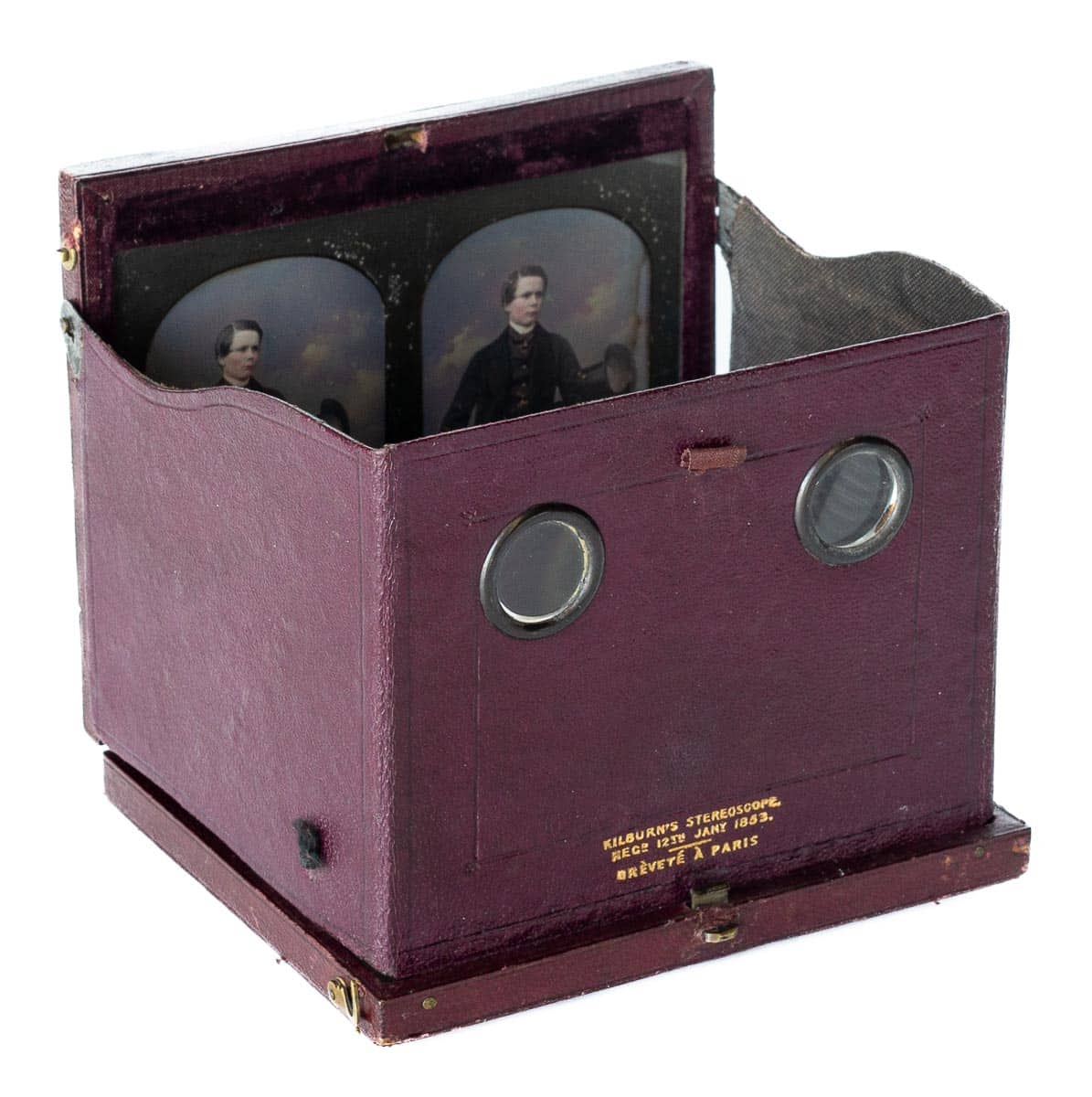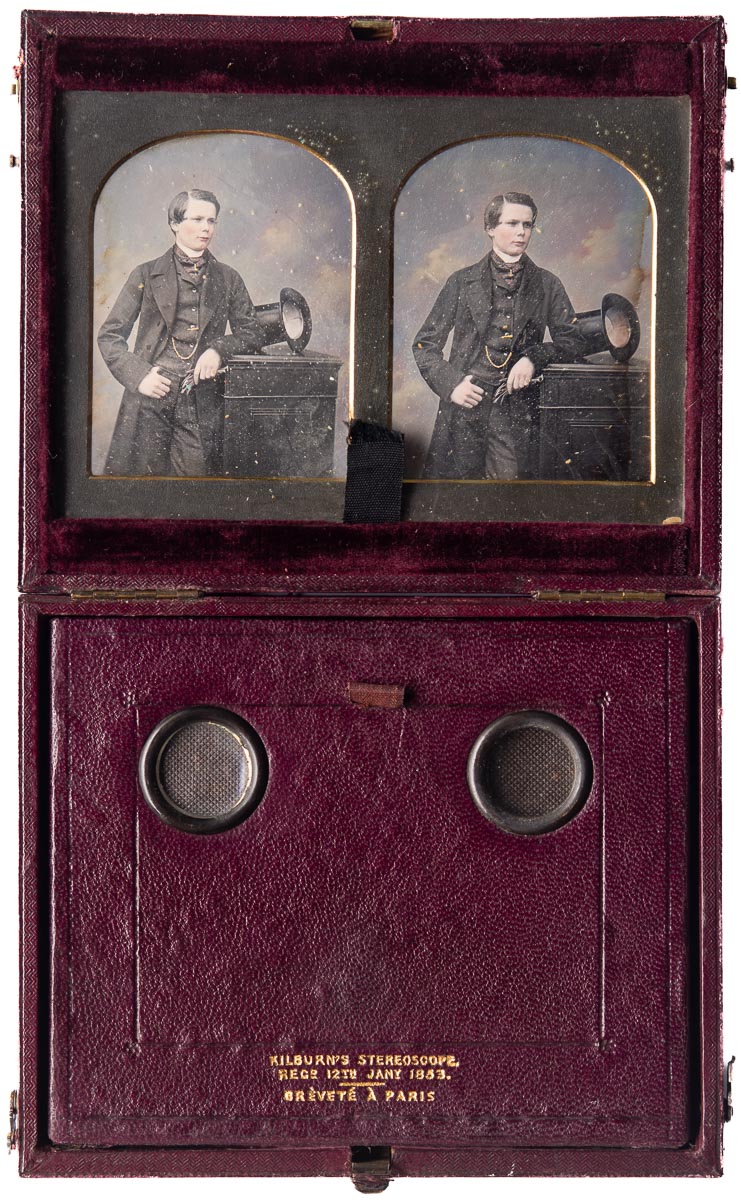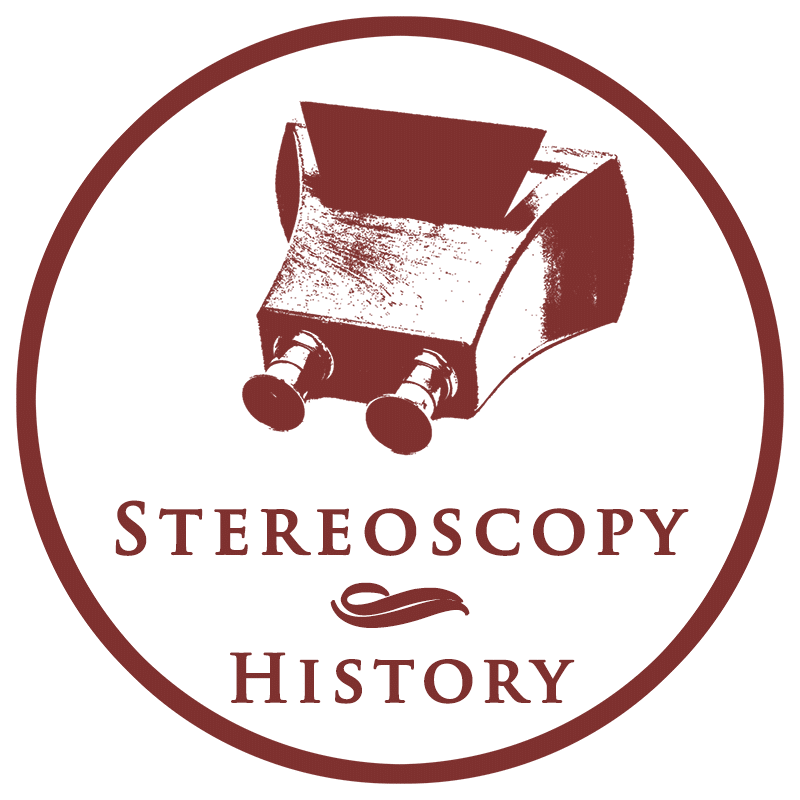
The Kilburn viewing case was designed by William Edward Kilburn (1818–1891). He was an English daguerreotypist and renowned for his skilled hand-coloured daguerreotypes. Kilburn designed a viewing case for stereo daguerreotypes, which was registered in Britain and patented in France in 1853. The viewing case was exclusively manufactured by Moran and Quin in London1 and sold to daguerreotypists who could customise it with their own names.

Specifications
| Manufacturer: | Moran and Quin, London |
| Year of introduction: | 1853 |
| Year of manufacture: | c. 1855 |
| Type: | Hand-held |
| Viewer: | Single-view |
| Serial number: | None |
| Stereoview support: | Daguerreotype |
| Stereoview format: | 11.5 x 8 cm |
| Lens focussing: | No |
| Inter-ocular adjustment: | No |
| Eyepiece blinders: | No |
| Dimensions (L x W x H): | 13 x 10.5 x 2 cm (folded) 13 x 10.5 x 12 cm (unfolded) |
| Construction: | Metal and leather |
| Other features: | On the cover: Appointment – Kilburn – 222, Regent Street On the lens panel: Kilburn’s Stereoscope. Reg. 12th Jany. 1853. Brèveté á Paris. |
French patent
| Number: | FR15406 |
| Title: | Perfectionnements apportés dans la fabrication des caisses ou boîtes stéréoscopiques ou boîtes-binocles |
| Filing date: | 24-01-1853 |
| Publishing date: | |
| Applicant(s): | William Edward Kilburn |
Glossary: hand-held / inter-ocular adjustment / single-view
References
- Pellerin, D. and May, B. (2021) Stereoscopy: the dawn of 3-D, p. 88-90. ↩︎
